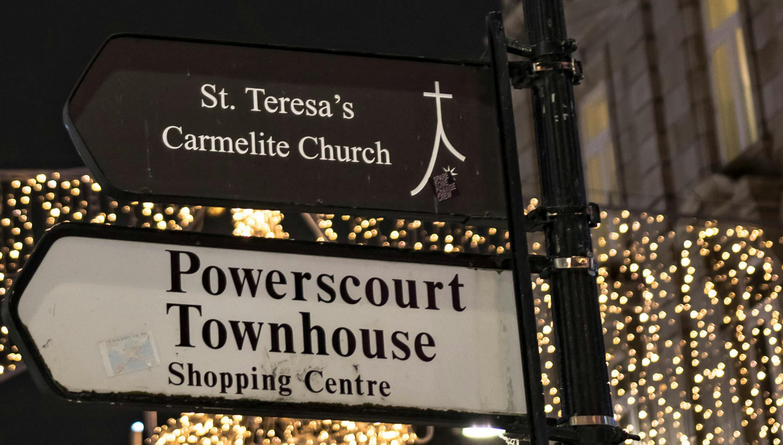Considerations When Building a Custom Property for Your Business

Building a custom property for your business feels like painting on a blank canvas. You get to create something that perfectly fits your vision, but the process can quickly become overwhelming without proper planning. This is where reliable construction companies come in. Smart business owners know that rushed decisions often lead to costly mistakes down the road. The key lies in understanding what questions to ask before breaking ground. Your property will serve as the foundation for years of operations, so getting it right matters more than getting it fast. Think of this as your chance to build something that truly works for you, rather than trying to squeeze your business into someone else’s box.
Location Strategy and Market Analysis

Your property’s location can make or break your business before you even open the doors. Demographics shift, traffic patterns change, and what looks perfect today might become a dead zone tomorrow. Successful businesses spend months researching foot traffic, competitor proximity, and local economic trends before committing to a site. Don’t fall into the trap of choosing based on rent alone – a cheap location that nobody visits will cost you far more in lost revenue. Consider how your customers will find you, park, and access your building throughout different seasons and times of day. The perfect spot exists at the intersection of affordability, accessibility, and growth potential.
Design Functionality and Future Growth
 Your building should work as hard as you do, supporting your operations rather than fighting against them. Think about how your team moves through the space during busy periods and plan accordingly. Storage needs, customer flow, employee workspaces, and equipment placement all deserve careful consideration before finalizing your design. Don’t design for today’s needs alone – successful businesses outgrow their spaces, and adaptive design prevents costly renovations later. Consider how you might expand operations, add new services, or accommodate seasonal fluctuations in staffing. A well-designed space feels effortless to work in and grows alongside your business ambitions.
Your building should work as hard as you do, supporting your operations rather than fighting against them. Think about how your team moves through the space during busy periods and plan accordingly. Storage needs, customer flow, employee workspaces, and equipment placement all deserve careful consideration before finalizing your design. Don’t design for today’s needs alone – successful businesses outgrow their spaces, and adaptive design prevents costly renovations later. Consider how you might expand operations, add new services, or accommodate seasonal fluctuations in staffing. A well-designed space feels effortless to work in and grows alongside your business ambitions.
Budget Planning and Hidden Costs
Construction budgets have a sneaky habit of growing legs and walking away from you. What starts as a reasonable estimate can balloon into a financial nightmare faster than you can say “change order.” Experienced builders will tell you to add at least 20% to your initial budget for unexpected expenses that always seem to pop up. Permits, inspections, utility connections, and site preparation often carry surprise costs that catch first-time builders off guard. Smart planning means getting multiple detailed quotes and understanding exactly what each contractor includes in their base price. Remember that the cheapest bid usually comes with the most expensive surprises later.
Regulatory Compliance and Permits

Building codes exist for good reasons, but understanding them feels like learning a foreign language sometimes. Local zoning laws, fire safety requirements, accessibility standards, and environmental regulations all impact your project’s timeline and budget. Starting the permit process early can save you months of delays and help identify potential issues before they become expensive problems. Some municipalities move faster than others, so factor local government efficiency into your construction timeline. Working with experienced local contractors who understand regional requirements can streamline this process significantly. Think of permits as insurance – they protect you, your employees, and your customers from preventable problems.
Building a custom property represents one of …









 The first and most crucial factor to consider when choosing an online casino is licensing and regulation. Ensure that the casino holds a valid license from a reputable regulatory authority. These licenses indicate that the casino operates under strict regulations, ensuring fair gameplay and the protection of your personal and financial information.
The first and most crucial factor to consider when choosing an online casino is licensing and regulation. Ensure that the casino holds a valid license from a reputable regulatory authority. These licenses indicate that the casino operates under strict regulations, ensuring fair gameplay and the protection of your personal and financial information.

 With a strong presence among the younger generation, TikTok has become a goldmine for restaurant marketing. The golden key to TikTok lies in producing engaging and entertaining content that shares the same value and resonates with your target audience. From showcasing mouthwatering dishes being prepared in your kitchen to behind-the-scenes glimpses into the daily life of your restaurant, there are endless possibilities for captivating videos. endsOne unique aspect of TikTok is its viral nature – one well-received video can catapult your restaurant into internet fame overnight. By utilizing trending hashtags and challenges, you can tap into existing conversations and gain exposure to a wider audience. Collaborating with popular influencers or local celebrities can also give your brand a boost and attract new customers.
With a strong presence among the younger generation, TikTok has become a goldmine for restaurant marketing. The golden key to TikTok lies in producing engaging and entertaining content that shares the same value and resonates with your target audience. From showcasing mouthwatering dishes being prepared in your kitchen to behind-the-scenes glimpses into the daily life of your restaurant, there are endless possibilities for captivating videos. endsOne unique aspect of TikTok is its viral nature – one well-received video can catapult your restaurant into internet fame overnight. By utilizing trending hashtags and challenges, you can tap into existing conversations and gain exposure to a wider audience. Collaborating with popular influencers or local celebrities can also give your brand a boost and attract new customers. Next, these loyalty programs work by offering incentives, such as discounts or exclusive promotions, to customers who frequent the restaurant on a regular basis. The best thing about it is that it helps foster long-term relationships with customers. By providing them with special perks and rewards, restaurants can show their appreciation for their continued support and encourage them to keep coming …
Next, these loyalty programs work by offering incentives, such as discounts or exclusive promotions, to customers who frequent the restaurant on a regular basis. The best thing about it is that it helps foster long-term relationships with customers. By providing them with special perks and rewards, restaurants can show their appreciation for their continued support and encourage them to keep coming …
 A comprehensive competitive analysis strategy allows businesses to gain insights into industry best practices for customer support. By studying successful competitors, companies can identify the strategies, processes, and technologies they employ to deliver exceptional customer service. This information can be used to benchmark against existing practices and identify areas for improvement.
A comprehensive competitive analysis strategy allows businesses to gain insights into industry best practices for customer support. By studying successful competitors, companies can identify the strategies, processes, and technologies they employ to deliver exceptional customer service. This information can be used to benchmark against existing practices and identify areas for improvement. By conducting a comprehensive competitive analysis, businesses can identify their unique value proposition and differentiate themselves from competitors. Through this process, companies gain insights into the strengths and weaknesses of their competitors’ customer support, allowing them to identify areas where they can excel.
By conducting a comprehensive competitive analysis, businesses can identify their unique value proposition and differentiate themselves from competitors. Through this process, companies gain insights into the strengths and weaknesses of their competitors’ customer support, allowing them to identify areas where they can excel.







 Do you wonder how pro gamers pull off fancy movements and kills? It’s with a high-performance gaming
Do you wonder how pro gamers pull off fancy movements and kills? It’s with a high-performance gaming 

 One of the most common
One of the most common  Lastly, eating disorders, such as anorexia nervosa and bulimia nervosa, are serious mental health disorders involving extreme food-related behaviors. People with these disorders may become obsessed with their weight and engage in dangerous behaviors such as fasting or binge eating.
Lastly, eating disorders, such as anorexia nervosa and bulimia nervosa, are serious mental health disorders involving extreme food-related behaviors. People with these disorders may become obsessed with their weight and engage in dangerous behaviors such as fasting or binge eating.
 One thing that is often overlooked is updating old content. If you have a blog post or article over a year old, the information in it is likely outdated. By updating your old content and adding new information, you can make it relevant again and increase its chances of ranking higher in search results. Not only will this help to increase traffic, but it will also help to improve your website’s overall authority.
One thing that is often overlooked is updating old content. If you have a blog post or article over a year old, the information in it is likely outdated. By updating your old content and adding new information, you can make it relevant again and increase its chances of ranking higher in search results. Not only will this help to increase traffic, but it will also help to improve your website’s overall authority. Lastly, optimizing your internal links can also help to generate more traffic. This means ensuring that your website’s pages are all linked together in a way that makes sense and that the links are easy to find and follow. This can be a bit of a technical task, but it’s worth it if it means getting more people to visit your site. Internal linking will help to improve your website’s overall structure and make it easier for search engines to index your pages. If you’re unsure how to optimize your internal links, plenty of guides arategy. Keep in mind that these tips require patience and regular effort if you want to see long-term results. But with some elbow grease and our help, you can watch your website traffic soar. Have you tried any of these? What were your results? Let us know in the comments below.…
Lastly, optimizing your internal links can also help to generate more traffic. This means ensuring that your website’s pages are all linked together in a way that makes sense and that the links are easy to find and follow. This can be a bit of a technical task, but it’s worth it if it means getting more people to visit your site. Internal linking will help to improve your website’s overall structure and make it easier for search engines to index your pages. If you’re unsure how to optimize your internal links, plenty of guides arategy. Keep in mind that these tips require patience and regular effort if you want to see long-term results. But with some elbow grease and our help, you can watch your website traffic soar. Have you tried any of these? What were your results? Let us know in the comments below.…
 One way to make your bathroom more eco-friendly is to use cleaning products that are less harmful to the environment. Many “green” cleaners on the market are made from natural ingredients and are gentle on the earth. When choosing a bathroom cleaner, look for one that is biodegradable and free of harsh chemicals. You can also make cleaning products using simple ingredients like vinegar, baking soda, and lemon juice.
One way to make your bathroom more eco-friendly is to use cleaning products that are less harmful to the environment. Many “green” cleaners on the market are made from natural ingredients and are gentle on the earth. When choosing a bathroom cleaner, look for one that is biodegradable and free of harsh chemicals. You can also make cleaning products using simple ingredients like vinegar, baking soda, and lemon juice. LED bulbs use much less energy than traditional incandescent bulbs and last a lot longer too. This means you’ll save money on your energy bills and won’t have to replace your lightbulbs often. You can also find LED bulbs in different colors and shades to suit your style. If you’re looking for ways to make your bathroom more eco-friendly, consider switching to LED light bulbs.
LED bulbs use much less energy than traditional incandescent bulbs and last a lot longer too. This means you’ll save money on your energy bills and won’t have to replace your lightbulbs often. You can also find LED bulbs in different colors and shades to suit your style. If you’re looking for ways to make your bathroom more eco-friendly, consider switching to LED light bulbs. One way to make your bathroom more eco-friendly is to buy eco-friendly toilet paper. Many brands sell eco-friendly toilet paper made from recycled materials. This toilet paper is just as effective as regular toilet paper, but it helps reduce your environmental impact. Some brands sell toilet paper made from bamboo, an environmentally sustainable material.
One way to make your bathroom more eco-friendly is to buy eco-friendly toilet paper. Many brands sell eco-friendly toilet paper made from recycled materials. This toilet paper is just as effective as regular toilet paper, but it helps reduce your environmental impact. Some brands sell toilet paper made from bamboo, an environmentally sustainable material.
 Another must-have for your patio oasis is comfortable seating. After all, what’s the point of having a beautiful backyard if you can’t enjoy it? Outdoor sofas and chairs are the perfect way to relax in style. They come in a variety of styles and materials so that you can find the ideal furniture for your patio. And if you’re looking for a little more privacy, consider adding an outdoor daybed or hammock to your oasis.
Another must-have for your patio oasis is comfortable seating. After all, what’s the point of having a beautiful backyard if you can’t enjoy it? Outdoor sofas and chairs are the perfect way to relax in style. They come in a variety of styles and materials so that you can find the ideal furniture for your patio. And if you’re looking for a little more privacy, consider adding an outdoor daybed or hammock to your oasis. No matter what time of day it is, patio lighting will make your backyard feel like an oasis. String lights are a popular choice for patio lighting, as they add a touch of romance to any space. But if you’re looking for something a little more modern, consider solar-powered LED lights. They are easy to install and require no electricity, making them a great eco-friendly option.
No matter what time of day it is, patio lighting will make your backyard feel like an oasis. String lights are a popular choice for patio lighting, as they add a touch of romance to any space. But if you’re looking for something a little more modern, consider solar-powered LED lights. They are easy to install and require no electricity, making them a great eco-friendly option.
 Another big pro of employing an experienced accountant is that they can act as a business plan support system. They can help you track your progress, identify areas of improvement, and make sure that you are on track to reach your goals. It can be an invaluable asset, especially in the early stages of starting a business. Not only will it help you stay on track, but it can also give you peace of mind knowing that someone has your back.
Another big pro of employing an experienced accountant is that they can act as a business plan support system. They can help you track your progress, identify areas of improvement, and make sure that you are on track to reach your goals. It can be an invaluable asset, especially in the early stages of starting a business. Not only will it help you stay on track, but it can also give you peace of mind knowing that someone has your back. Tax and business are something that always goes hand in hand. No matter how big or small your business is, you will always have to deal with taxes. And sometimes, business owners find it time-consuming to deal with the taxation process. It is where a professional accountant can be a lifesaver. They can help you navigate the complicated world of taxes and ensure that you comply with all the rules and regulations. They can also help you take advantage of any tax breaks or incentives you may be eligible for.
Tax and business are something that always goes hand in hand. No matter how big or small your business is, you will always have to deal with taxes. And sometimes, business owners find it time-consuming to deal with the taxation process. It is where a professional accountant can be a lifesaver. They can help you navigate the complicated world of taxes and ensure that you comply with all the rules and regulations. They can also help you take advantage of any tax breaks or incentives you may be eligible for.
 If you’re like most people, you probably think of strategy games as dry and dull, but the truth is, they can be a lot of fun. There are many different strategy games out there, from simple puzzle games to complex military simulations. While they may require more thought than your average video game, the rewards can be well worth it. One of the best things about strategy games is that players of all ages can enjoy them.
If you’re like most people, you probably think of strategy games as dry and dull, but the truth is, they can be a lot of fun. There are many different strategy games out there, from simple puzzle games to complex military simulations. While they may require more thought than your average video game, the rewards can be well worth it. One of the best things about strategy games is that players of all ages can enjoy them.
 One of the best things about getting your news online is that you can get it from multiple sources. It gives you a more well-rounded view of what’s happening in the world and allows you to form your own opinions. You can also find different perspectives on the same story, which can help you to understand it better.
One of the best things about getting your news online is that you can get it from multiple sources. It gives you a more well-rounded view of what’s happening in the world and allows you to form your own opinions. You can also find different perspectives on the same story, which can help you to understand it better. Finally, one of the best things about getting your news online is that you can take control of what you see. It means that you can choose to see only the news that you want to see and avoid the topics that don’t interest you. You can also customize your news feed to include only the sources that you trust.
Finally, one of the best things about getting your news online is that you can take control of what you see. It means that you can choose to see only the news that you want to see and avoid the topics that don’t interest you. You can also customize your news feed to include only the sources that you trust.
 Your home will be more comfortable. As the weather outside starts to cool down, your home will start to feel warmer. This is especially true if you’ve been using air conditioning throughout the summer. Preparing your home for autumn can help keep the heat inside where it belongs.
Your home will be more comfortable. As the weather outside starts to cool down, your home will start to feel warmer. This is especially true if you’ve been using air conditioning throughout the summer. Preparing your home for autumn can help keep the heat inside where it belongs.
 Because they often have the worst hand, less experienced players don’t bother to learn about their opponents. Poker games often have players who don’t know the strength of their hands. They just keep on playing without any strategies. They either make mistakes or bluff. You must stay focused and learn to read your opponent’s moves in order for you to win the game.
Because they often have the worst hand, less experienced players don’t bother to learn about their opponents. Poker games often have players who don’t know the strength of their hands. They just keep on playing without any strategies. They either make mistakes or bluff. You must stay focused and learn to read your opponent’s moves in order for you to win the game. I find it very frustrating to watch someone lose big, get the nuts or very close on the flop, then go all-in and take everyone out of the pot. Bad players get excited about winning good cards and want to keep the stake. If you believe your hand will beat those of the other players, don’t force them into folding. They should win something that they can use to build the pot.
I find it very frustrating to watch someone lose big, get the nuts or very close on the flop, then go all-in and take everyone out of the pot. Bad players get excited about winning good cards and want to keep the stake. If you believe your hand will beat those of the other players, don’t force them into folding. They should win something that they can use to build the pot.



 Perhaps you’ve heard of something called a smartphone? Yes, it’s right there; maybe in your hand right now. However, you may also know that you should spend less time on your cell phone when you are working. No one is asking you to take away your cell phone forever.
Perhaps you’ve heard of something called a smartphone? Yes, it’s right there; maybe in your hand right now. However, you may also know that you should spend less time on your cell phone when you are working. No one is asking you to take away your cell phone forever.
 Among the fundamental variables you need to consider is perseverance. There are days once the inhabitance is most noteworthy and there are events when fewer individuals are to see. You additionally should factor in the truth that you’re managing the exceptionally transient
Among the fundamental variables you need to consider is perseverance. There are days once the inhabitance is most noteworthy and there are events when fewer individuals are to see. You additionally should factor in the truth that you’re managing the exceptionally transient  You may have to test the program to learn on the off chance that it will deal with your establishment as effectively as you’d like it to. It should take care of business as fast as conceivable to guarantee that the procedure on your foundation moves when they need to. This may connote that the ideal option is one of the lean POS frameworks.
You may have to test the program to learn on the off chance that it will deal with your establishment as effectively as you’d like it to. It should take care of business as fast as conceivable to guarantee that the procedure on your foundation moves when they need to. This may connote that the ideal option is one of the lean POS frameworks.
 The most complex and stressful part of a divorce case is the war between the divorcing parents to have sole physical custody of their kids. A family lawyer will work in your best interest to satisfy your desire to obtain only the right of guardianship.
The most complex and stressful part of a divorce case is the war between the divorcing parents to have sole physical custody of their kids. A family lawyer will work in your best interest to satisfy your desire to obtain only the right of guardianship.


 Discount prices and exclusive offers make shopping more applicable to clients. They prefer to shop with large brands and save on each purchase, using
Discount prices and exclusive offers make shopping more applicable to clients. They prefer to shop with large brands and save on each purchase, using 

 Not only for extreme activity, but an electric bike is also a good solution for your daily routine. Many employees and workers always struggle to fight traffic every morning and arrive on time at their office. Such a commuting habit can be easily solved with the electric bikes with its very thoughtful principle. Think of China and other famous countries that make the most of bicycles for effectivity and productivity. No wonder many people have started to enjoy them in a daily routine.
Not only for extreme activity, but an electric bike is also a good solution for your daily routine. Many employees and workers always struggle to fight traffic every morning and arrive on time at their office. Such a commuting habit can be easily solved with the electric bikes with its very thoughtful principle. Think of China and other famous countries that make the most of bicycles for effectivity and productivity. No wonder many people have started to enjoy them in a daily routine.